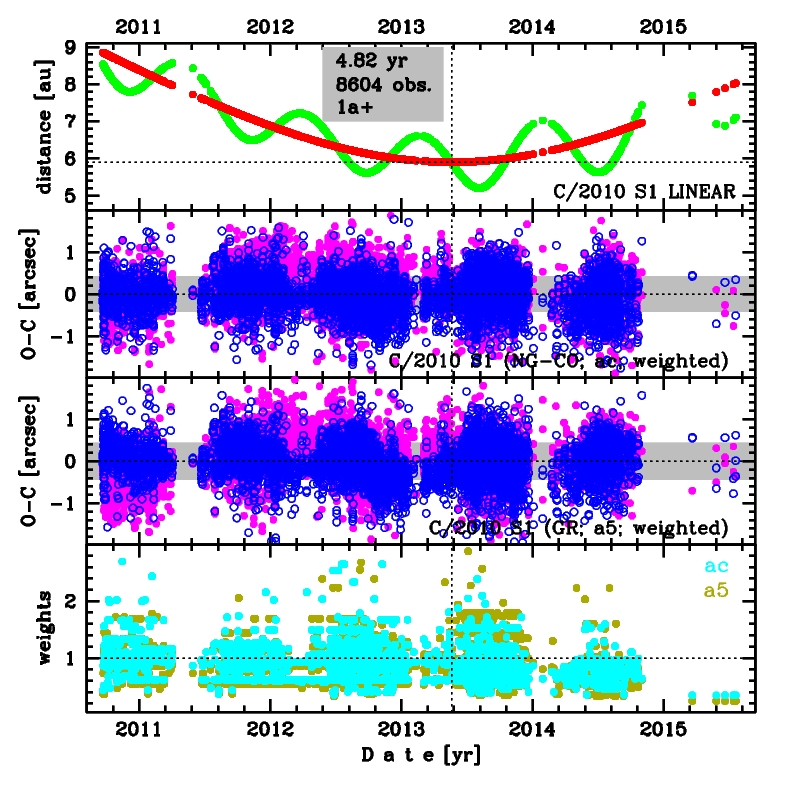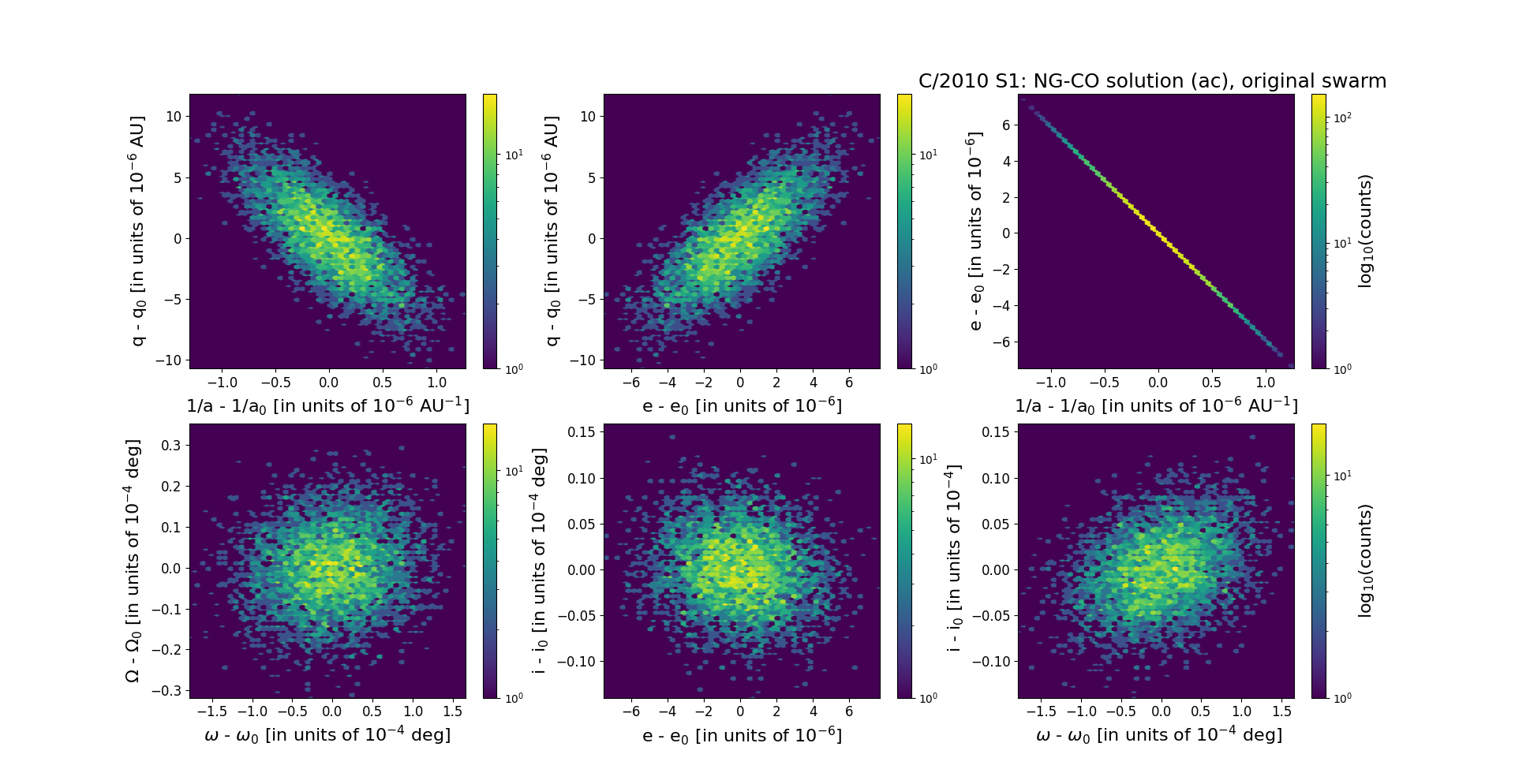C/2010 S1 LINEAR
more info
Comet C/2010 S1 was discovered on 21 September 2010 and next observed almost continuously by 4.8 yr in a range of heliocentric distances: 8.85 au – 5.900 au (perihelion) – 8.02 au. At the moment of discovery, it was two years and eight months before perihelion passage (see figure).
Comet had its closest approach to the Earth on 4 August 2013 (5.205 au, 2.5 months after perihelion).
NG orbit is possible to obtained using the full data arc; however uncertainties of NG parameters are notable, especially for A2 (see solutions ac and bc differing only in data weighting).
This Oort spike comet suffers a tiny planetary perturbations during its passage through the planetary system.
See also Królikowska and Dones 2023 and Królikowska and Dybczyński 2017.
Comet had its closest approach to the Earth on 4 August 2013 (5.205 au, 2.5 months after perihelion).
NG orbit is possible to obtained using the full data arc; however uncertainties of NG parameters are notable, especially for A2 (see solutions ac and bc differing only in data weighting).
This Oort spike comet suffers a tiny planetary perturbations during its passage through the planetary system.
See also Królikowska and Dones 2023 and Królikowska and Dybczyński 2017.
| solution description | ||
|---|---|---|
| number of observations | 8579 | |
| data interval | 2010 09 21 – 2015 07 19 | |
| data type | perihelion within the observation arc (FULL) | |
| data arc selection | entire data set (STD) | |
| range of heliocentric distances | 8.85 au – 5.90 au (perihelion) – 8.02 au | |
| type of model of motion | NC - non-gravitational orbits for symmetric CO-g(r)-like function | |
| data weighting | YES | |
| number of residuals | 17004 | |
| RMS [arcseconds] | 0.42 | |
| orbit quality class | 1a+ | |
| orbital elements (barycentric ecliptic J2000) | ||
|---|---|---|
| Epoch | 1706 06 07 | |
| perihelion date | 2013 05 19.84977966 | ± 0.00059309 |
| perihelion distance [au] | 5.90046989 | ± 0.00000323 |
| eccentricity | 0.99986395 | ± 0.00000225 |
| argument of perihelion [°] | 118.596206 | ± 0.000052 |
| ascending node [°] | 93.453940 | ± 0.000009 |
| inclination [°] | 125.320379 | ± 0.000004 |
| reciprocal semi-major axis [10-6 au-1] | 23.06 | ± 0.38 |
| file containing 5001 VCs swarm |
|---|
| 2010s1ac.bmi |

Upper panel: Time distribution of positional observations with corresponding heliocentric (red curve) and geocentric (green curve) distance at which they were taken. The horizontal dotted line shows the perihelion distance for a given comet whereas vertical dotted line — the moment of perihelion passage.
Middle panel(s): O-C diagram for a given solution (sometimes in comparison to another solution available in CODE), where residuals in right ascension are shown using magenta dots and in declination by blue open circles.
Lowest panel: Relative weights for a given data set(s).
Middle panel(s): O-C diagram for a given solution (sometimes in comparison to another solution available in CODE), where residuals in right ascension are shown using magenta dots and in declination by blue open circles.
Lowest panel: Relative weights for a given data set(s).
